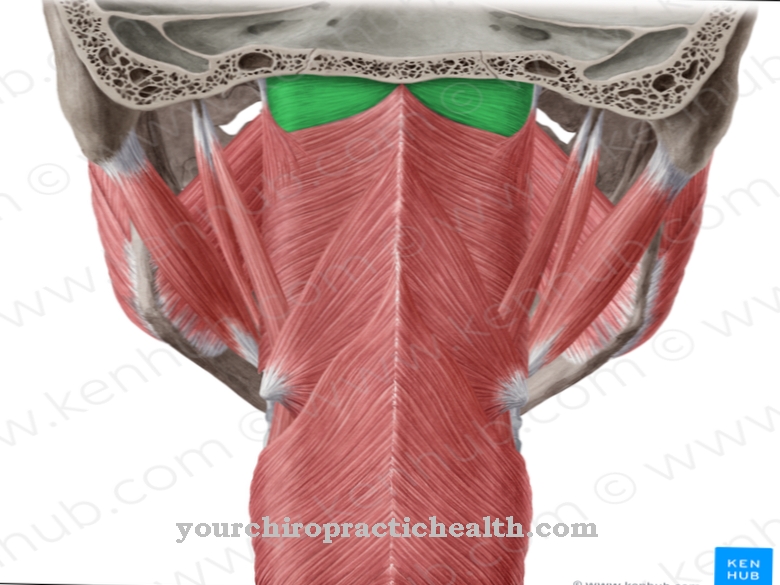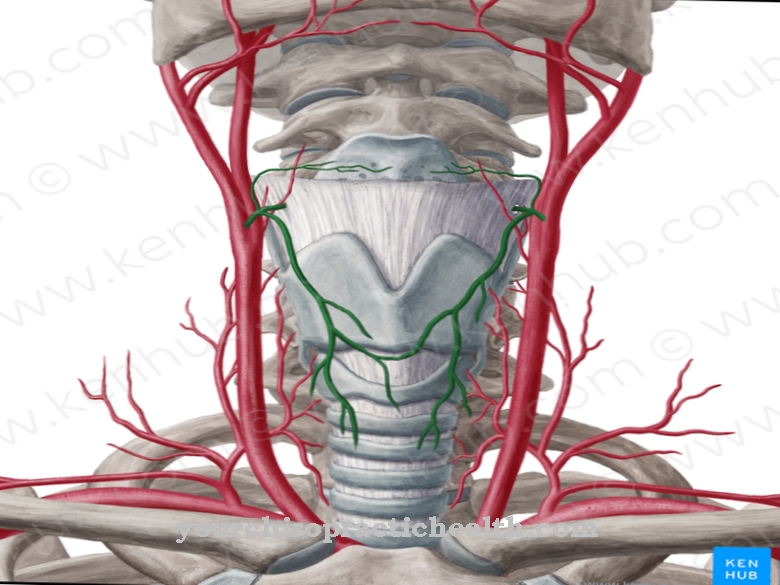In the smooth muscles it is a form of muscle that is located in numerous hollow human organs. She has the ability to work independently.
What is smooth muscle?
The smooth musculature is understood to mean a type of musculature which, in contrast to the striated muscles, cannot be controlled arbitrarily. It influences the form and function of the internal organs. It forms the contractile tissue of numerous hollow organs as well as human blood vessels and lymph vessels.
The term "smooth muscles" can be traced back to the fact that the transverse stripes of the muscle tissue are missing on a microscopic image. The heart muscle is one of the exceptions. Although the heart is an internal hollow organ, the heart muscle does not consist of smooth muscles. The striated muscles are usually located in the skeletal muscles. The horizontal stripes can be seen under polarizing light. It arises from the regular arrangement of the proteins myosin and actin. However, this arrangement does not exist in the smooth muscles. For this reason, the muscle cells of the smooth muscles appear homogeneous even in polarizing light.
Anatomy & structure
Myocytes are a typical feature of smooth muscles. These are narrow, elongated muscle cells that do not have any transverse stripes. The smooth muscles are primarily located on the walls of hollow organs such as the urinary tract, the sexual organs, the respiratory tract, the intestine and in the blood vessels.
The smooth muscle myocytes are in the shape of a spindle. Their diameter is between 5 and 8 µm, but this depends on the condition of the cells. The size of the myocytes in a contracted muscle is slightly larger than in a muscle that is slack. The length of the myocytes can vary considerably, which also depends on the position of the muscle cell. The myocytes within the blood vessels only reach an average length of 15 to 20 µm. In other organs, however, their length is between 200 and 300 µm.
The cell nuclei of the smooth muscles are mostly located in the middle of the cells and are relatively elongated. The filaments myosin and actin are found in high concentrations in the cytoplasm of the muscle cells, the structure of which is less strict than that of the striated muscles. They pull through the individual muscle cells in a disordered manner. They are fixed to anchoring plaques in the cytoplasm and at the cell edge. This arrangement enables the cell and thus also the muscle to contract more strongly during contractions than in the striated muscles. The single muscle cell surrounds the basal lamina, which is a thin skin.
The smooth muscles can be divided into two different forms. These are the single-unit type and the multi-unit type. Differences between these two subforms exist in their structure, innervation and function. Sometimes, however, there are also mixed forms, which is particularly true of the vascular muscles.
The individual muscle cells of the single unit type are able to connect to one another through special gap junctions. In this way, an exchange between second messenger molecules and ions is made possible, which results in a functional unit because the cells couple electrically. Single-unit types occur particularly in the ureter, the gastrointestinal tract and the uterus. The multi-unit type, on the other hand, is found in the spermatic duct, the hair muscles and the inner eye muscles.
Function & tasks
In contrast to striated muscles, the smooth muscles cannot be controlled by humans. It takes part in numerous vital processes of the organism. These include the pumping movements of the heart, digestion and the setting up of fine hairs on the surface of the skin.
Humans are not aware of these processes and cannot control them. Only the vegetative nervous system is able to influence the muscles of the hollow organs. This takes place with adrenaline and acetylcholine via the sympathetic and parasympathetic nervous system. In this way, at least an indirect influence is possible.
The smooth muscles have the ability to shorten much more than the skeletal muscles, but this takes more time. After all, this state can be maintained for a long time without being associated with fatigue. This process is also known as tonic contraction or real muscle tone. During the birth process, the smooth muscles ensure that the uterus makes a rhythmic contraction.
You can find your medication here
➔ Medicines for muscle weaknessDiseases
Functional impairments are more common on smooth muscles than on the heart or skeletal muscles. It has the disadvantage that it is difficult to regenerate, so that a connective tissue scar often forms. Defects in the smooth muscles can lead to various diseases. This includes u. a. uterine contractions.
Malignant smooth muscle cells can also develop in the uterus or in the digestive tract. These are known as leiomyosarcomas. The tumor originates from the smooth muscles. Its proportion of malignant growths in the uterus is one percent. It usually shows up from the age of 30. The symptoms of leiomyosarcoma are considered non-specific. In most cases, the uterus enlarges quickly. There is also bleeding. The occurrence of leiomyosarcomas is basically conceivable at any point on the smooth muscles. Leiomyosarcoma is a rare disease that is usually treated by surgery.














.jpg)













